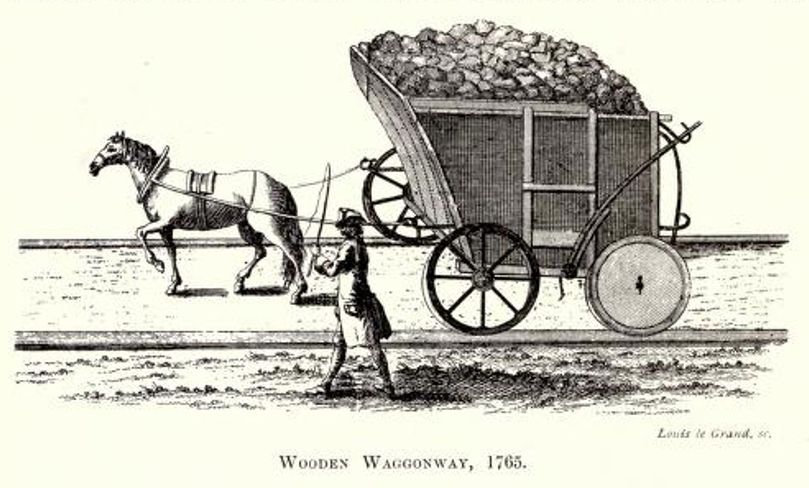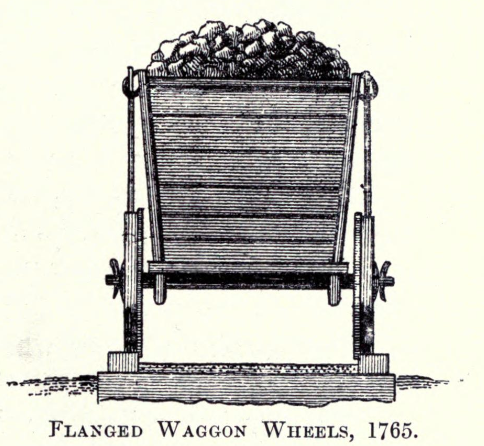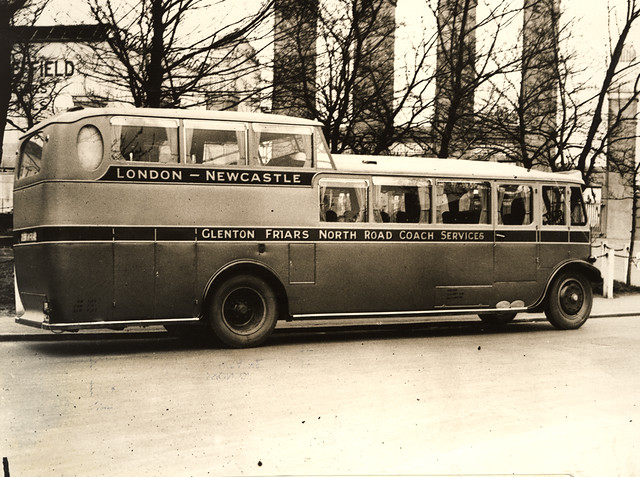Topics > Transport and Travel > Waggonways > Wooden Waggonways
Wooden Waggonways
Up to the last decade of the eighteenth century all the waggonways in the North of England were of wood. What was called the "double way" was the type most in use; it consisted of fir rails, generally six feet long, pegged down to oak sleepers and having beech rails - known as "false rails" laid upon and made fast to them. The butt ends were fitted very closely together and sometimes secured by iron bands. Whenever a steep incline or a sharp curve rendered the draught harder than usual, it was customary to nail thin plates of wrought iron upon the surface of the wooden rails to diminish the friction and prevent the rails from wearing.

These wooden waggonways did not disappear till long after the establishment of the railway system, and Sir Lowthian Bell, writing in 1863, remembered "within perhaps, twenty years, seeing them in use in the Garesfield Colliery Railway, which railway, from Rowlands Gill eastward, was really a part of the old Pontop and Derwenthaugh line already referred to. A portion of another of these waggonways, about half a mile in extent, also survived to a late period in the neighbourhood of Ewanrigg Hall near Maryport, much dilapidated and shaken by wear, and a visitor to that place in 18-37 made a note of the fact that "some of the wooden rails are covered with thin pieces of iron" and that "only one waggon is brought down at a time which runs the greatest part of the road itself, and is drawn up the incline again by a horse."
From plating the upper rails with these strips of iron to laying iron bars upon them was an easy transition, and Mr. William Reynolds of the Coalbrookdale Ironworks in Shropshire, by adopting the latter course - as a means of utilising his stock of surplus iron pigs - formed, in 1767, the first iron railway. These pigs were 5 feet long, 4 inches broad, and 1¼ inches thick. Plate-rails were used by Mr. John Curr, a native of the Tanfield district, in 1776, for an underground railway at the Duke of Norfolk's Colliery near Sheffield. Then, in 1785, at Alloa, in Clackmannanshire, the first malleable iron railway was laid ; bars, an inch and a quarter in breadth and nearly six eighths of an inch thick being fixed to the wooden rails of the waggonway. In 1789 William Jessop laid down on the Loughborough and Nanpantan Railway edge-rails of cast iron. The plate-rail which was almost universally adopted in Wales did not find much favour in the North of England, and fortunately so ; it was a development in the wrong direction, and would have retarded the progress of the railway. The only change essential was from the wooden rail to the iron edge rail….
Extract from: Tomlinson, William Weaver. The North Eastern Railway; its rise and development, 1915.








